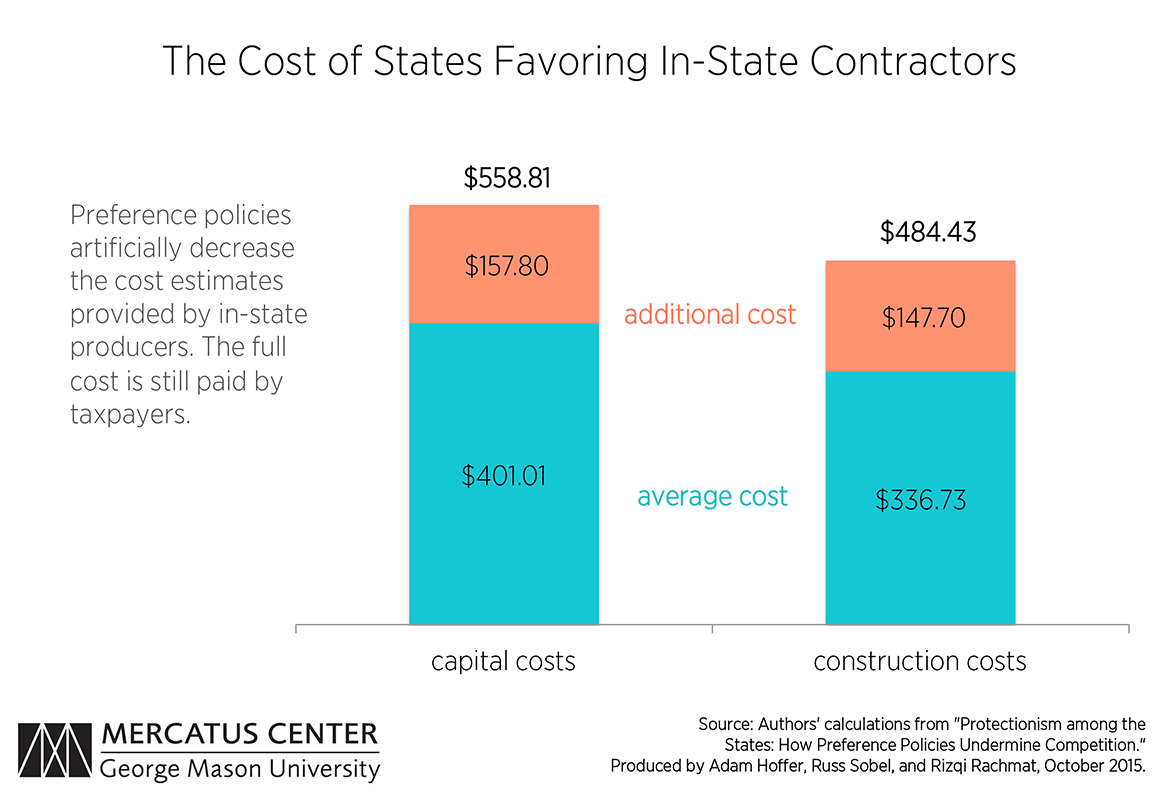- | Housing Housing
- | Data Visualizations Data Visualizations
- |
The Cost of States Favoring In-State Contractors
When state governments favor in-state businesses over more affordable out-of-state businesses, taxpayers are forced to pay more for government projects. So-called “preference policies” give politicians a politically valuable opportunity to buy goods from, and support employment for, a narrow set of producers within their state, but these policies increase the cost of government. This increase in the cost of government requires extra dollars from taxpayers, taking resources that could be put toward other uses.
When state governments favor in-state businesses over more affordable out-of-state businesses, taxpayers are forced to pay more for government projects. So-called “preference policies” give politicians a politically valuable opportunity to buy goods from, and support employment for, a narrow set of producers within their state, but these policies increase the cost of government. This increase in the cost of government requires extra dollars from taxpayers, taking resources that could be put toward other uses.
Preference policies artificially lower the cost estimates provided by in-state producers when they bid for government contracts. They typically work by reducing the cost of in-state bids by a certain percentage. These percentage discounts on each bid make in-state firms artificially attractive, relative to out-of-state bidders, since out-of-state bidders are excluded from the discount. This gives policymakers an incentive to buy from more expensive, in-state producers, but it leaves taxpayers on the hook to pay the full cost of an artificially cheap bid.
We set out to quantify the cost of these preference policies to taxpayers. We began by categorizing the policies of states into three different categories based on the extent to which they favored in-state businesses through the year 2006 (the most recent data available). States that favored in-state firms for all goods purchased were categorized as having broad preference policies, whereas states that favored in-state firms on only a few goods were categorized as having weak preference policies. States that did not favor any in-state firms were categorized as having no preference policy.
The most significant increase in costs occurs in states with broad preference policies. In 2006, the average state spent roughly $401 per person on capital expenditures. In states with broad preference policies, capital expenditures like the materials used to build roads or public schools were 39 percent above the average capital expenditures of all states combined, or an additional $158 per capita. Broad preference policies were also associated with an additional $148 in per capita construction expenditures, increasing construction expenditures 44 percent above the average construction expenditures of all states, from $336 to $484 per capita.
Preference policies translate into hundreds of millions in additional spending for states that favor in-state producers. For the median state in 2006, with a population of 4.2 million, broad preference policies were associated with an additional $664 million in capital expenditures and an additional $622 million in construction costs.
States looking for ways to save taxpayers millions of dollars should consider doing away with preference policies.

